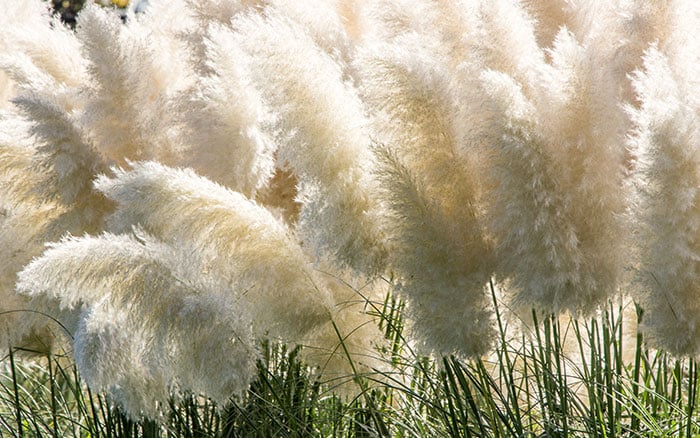Pampas grass has seen a resurgence in the past few years, with people not only growing it in their gardens but using the plumes for interior décor. But did you know the myth about its not-so-secret meaning?
Grass for the garden
The botanical name for pampas grass is Cortaderia selloana, which is derived from the Argentine Spanish name ‘cortadera’. This means ‘cutter’ which references the razor-sharp leaves.
It’s recommended that you wear gloves when handling and pruning so you aren’t harmed by its foliage.
Pampas grass an ornamental grass that is robust and evergreen, making it a great addition to gardens that want a bit of texture to soften any harsh landscapes.

It can grow up to 4m tall and 2.5m wide in 5 years, so they are a marvellous contender for bringing height to your space too.
Front garden myths

You may recognise this plant from front gardens, and it was a popular pick for adding some privacy at the front of your home.
However, from the 70s, sales of pampas grass decreased quite rapidly. It was said that those who planted pampas grass in their front gardens were indicating their interest in inviting fellow swingers round.
People were quick to dispel the myths, but it hasn’t been forgotten. Sales never quite reached what they used to in the past. Some garden centres decreased their stock or stopped selling it all together because no one was buying it.
But the love for pampas grass seems to be returning. Many have grown to love the use of the plumes indoors, placing them in vases as an ornamental feature with other dried flowers.
What about wildlife?
The plants texture may be great to look at, and another plus is that it benefits wildlife. In the winter, the yellow leaves act as a wonderful place for small garden animals such as hedgehogs to hibernate.
Birds are also drawn to pampas grass because the leaves can be used to make nests as well as a place for shelter. Some bird species will even eat the grass seeds.

Burned out

Burning grass is a method of pruning, albeit the ‘lazy way’. The fire clears out dead foliage, as well as getting rid of any invading plants.
The fire doesn’t damage the pampas grass through. In fact, they have evolved to tolerate and even benefit from this method, because a grass that is burned to the base will grow back better than one that is cut back to base.
Bear in mind that in our living environments and growing urban space it isn’t practical to burn grass. If you do get permission in your area to do it take precautions by burning on a windless day, and after watering all nearby plants that are non-grass by soaking the foliage.
It’s also a given that you will need to stand close with a hose to be on hand to extinguish any stray fire.

Leave A Comment